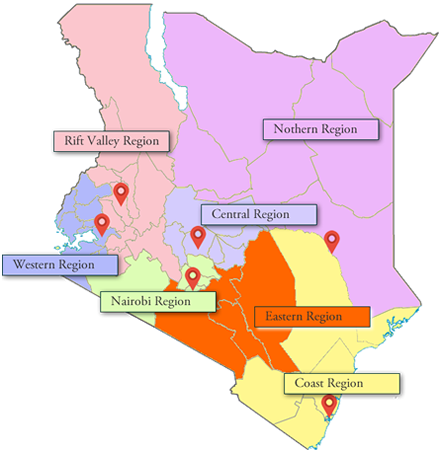Level of Counterfeiting among the Big Four Agenda Sectors in Kenya
The Anti-counterfeit Act, 2008 defines counterfeiting to include all forms of unlawful imitation of manufactured, produced, packaged and labeled copyright-protected goods. The Act also defines Counterfeiting to mean acting without the authority of the owner of intellectual property rights subsisting in Kenya or elsewhere in respect of protected goods.
The dangers posed by counterfeiting are both tangible and intangible; it affects both the manufacturer and the general public, and it harms both the manufacturers whose goods are counterfeited and the consumer who either intentionally or unknowingly purchases the counterfeited goods. Tangible impacts include the revenues lost by the trademark owner and the government to the counterfeiting manufacturer. Intangible impacts include the loss of goodwill and consumer confidence. A few of the negative repercussions of counterfeiting are employment losses and the closure of legitimate businesses as a result of unfavorable market competition.
The Big Four has been the cornerstone of the government’s development agenda. Despite being an ambitious project, it has not been immune to counterfeiting. The study sought to determine the level of counterfeiting in Kenya's Big Four Agenda sectors, with a special focus on traders, manufacturers, and supply chain agents, to demonstrate how prevalent this vice is in each of the agenda's four pillars. The study assesses the public's reactions to counterfeiting and assists the Authority in generating counterfeiting trends. The Authority will also use the findings of this study to advise on policy, awareness, and enforcement in order to reduce the prevalence of this crime in Kenya.
The study revealed that the major land border entry points for counterfeit goods are Busia, Lunga-Lunga and Namanga. Busia is the most prevalent with 31.7% of manufacturers and supply chain agents reporting it as a notorious entry point, followed by Lunga-Lunga at 24.6% and Namanga at 19%. Majority of businesses have control measures for counterfeits in place. A Memorandum of Understanding (MoU), a code of conduct, training, and surveillance were among the control measures in place. These safeguards have helped reduce counterfeiting along the supply-chain. Manufacturers are therefore urged to collaborate closely with governmental agencies in the fight against counterfeiting. The level of counterfeiting stood at 15.24% in 2021, a marginal reduction from 15.36% in 2020.



